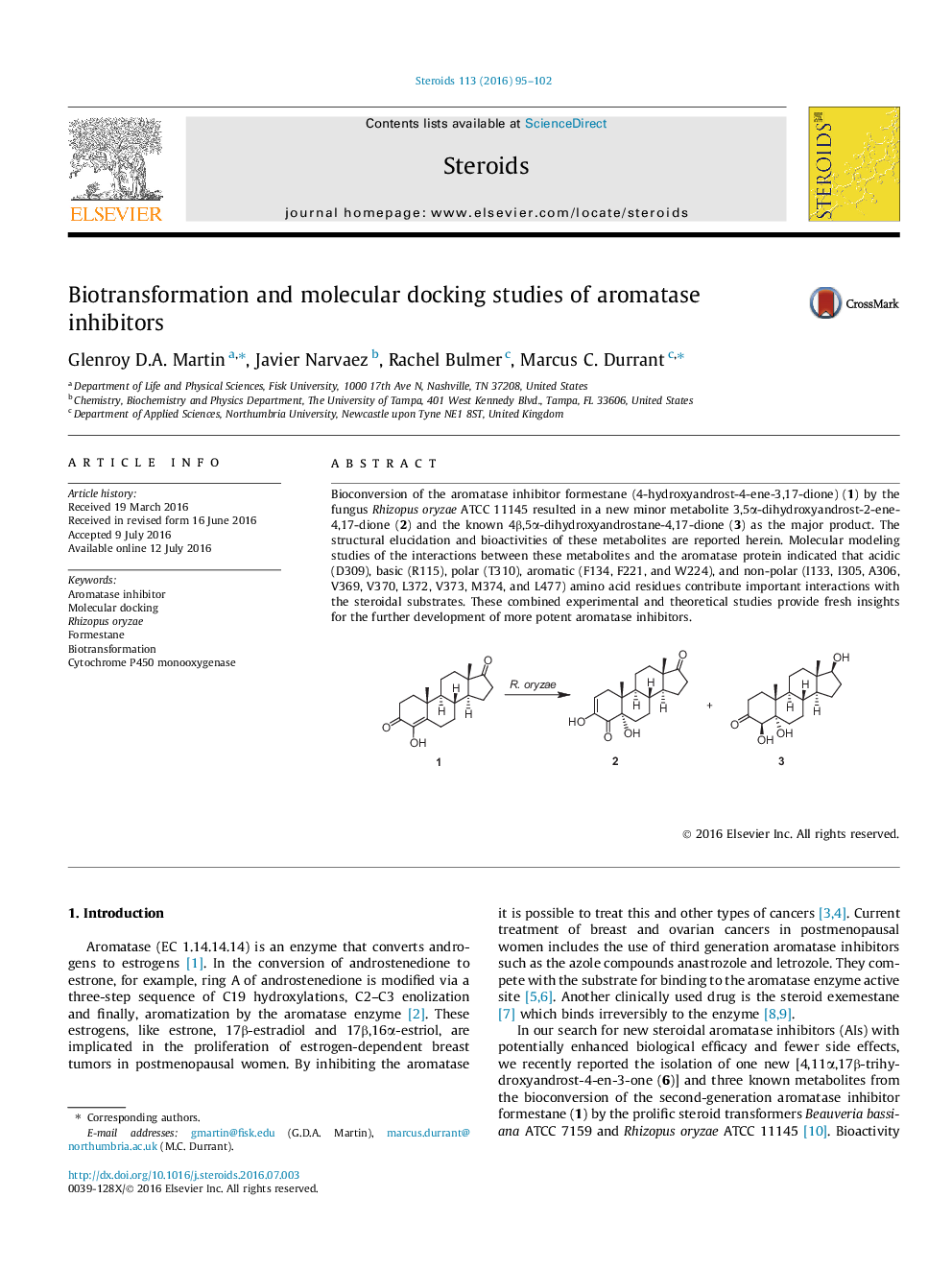| Article ID | Journal | Published Year | Pages | File Type |
|---|---|---|---|---|
| 2027677 | Steroids | 2016 | 8 Pages |
•A new formestane metabolite was isolated by microbial means.•This metabolite is active in a number of cytotoxic and cancer chemopreventive assays.•Molecular docking studies aid in the development of new aromatase inhibitors.
Bioconversion of the aromatase inhibitor formestane (4-hydroxyandrost-4-ene-3,17-dione) (1) by the fungus Rhizopus oryzae ATCC 11145 resulted in a new minor metabolite 3,5α-dihydroxyandrost-2-ene-4,17-dione (2) and the known 4β,5α-dihydroxyandrostane-4,17-dione (3) as the major product. The structural elucidation and bioactivities of these metabolites are reported herein. Molecular modeling studies of the interactions between these metabolites and the aromatase protein indicated that acidic (D309), basic (R115), polar (T310), aromatic (F134, F221, and W224), and non-polar (I133, I305, A306, V369, V370, L372, V373, M374, and L477) amino acid residues contribute important interactions with the steroidal substrates. These combined experimental and theoretical studies provide fresh insights for the further development of more potent aromatase inhibitors.Figure optionsDownload full-size imageDownload as PowerPoint slide
Graphical abstractFigure optionsDownload full-size imageDownload as PowerPoint slide
